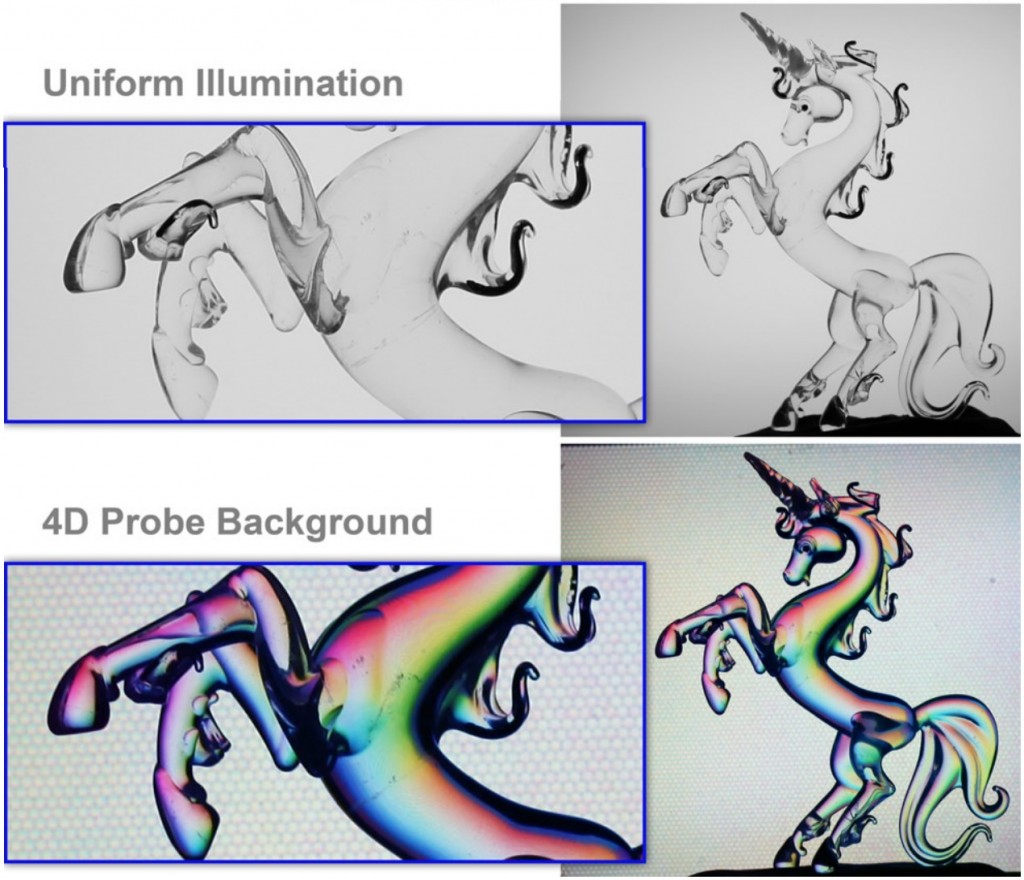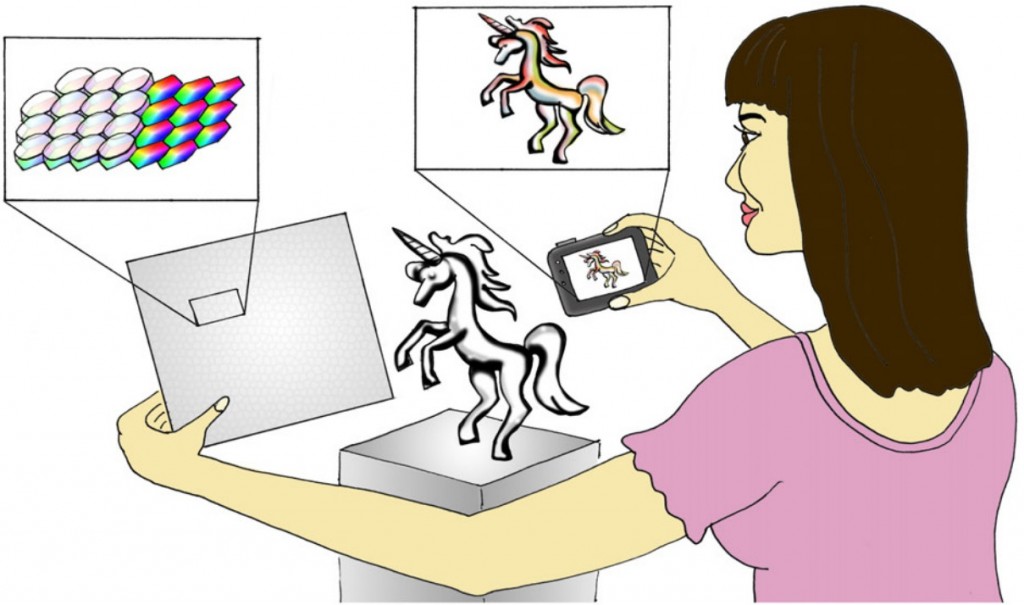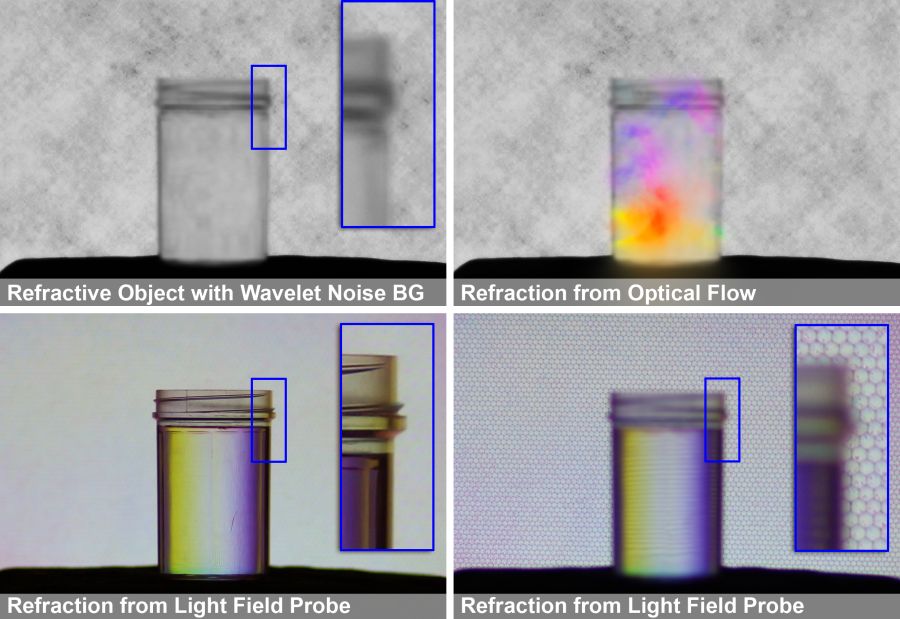
Light field probes -when included into the background of a scene- allow otherwise invisible optical properties to be photographed. In this example, the probe contains a classic Rainbow Schlieren filter that codes the angles and magnitudes of complex refractive events in hue and saturation.
Abstract
We introduce a new approach to capturing refraction in transparent media, which we call Light Field Background Oriented Schlieren Photography (LFBOS). By optically coding the locations and directions of light rays emerging from a light field probe, we can observe and measure changes of the refractive index field between the probe and a camera or an observer. Rather than using complicated and expensive optical setups as in traditional Schlieren photography we employ commodity hardware; our prototype consists of a camera and a lenslet array. By carefully encoding the color and intensity variations of a 4D probe instead of a diffuse 2D background, we avoid expensive computational processing of the captured data, which is necessary for Background Oriented Schlieren imaging (BOS).We analyze the benefits and limitations of our approach and discuss application scenarios.
Best Paper Award
This paper won the Best Paper Award at the International Conference on Computational Photography (ICCP) in 2011.






